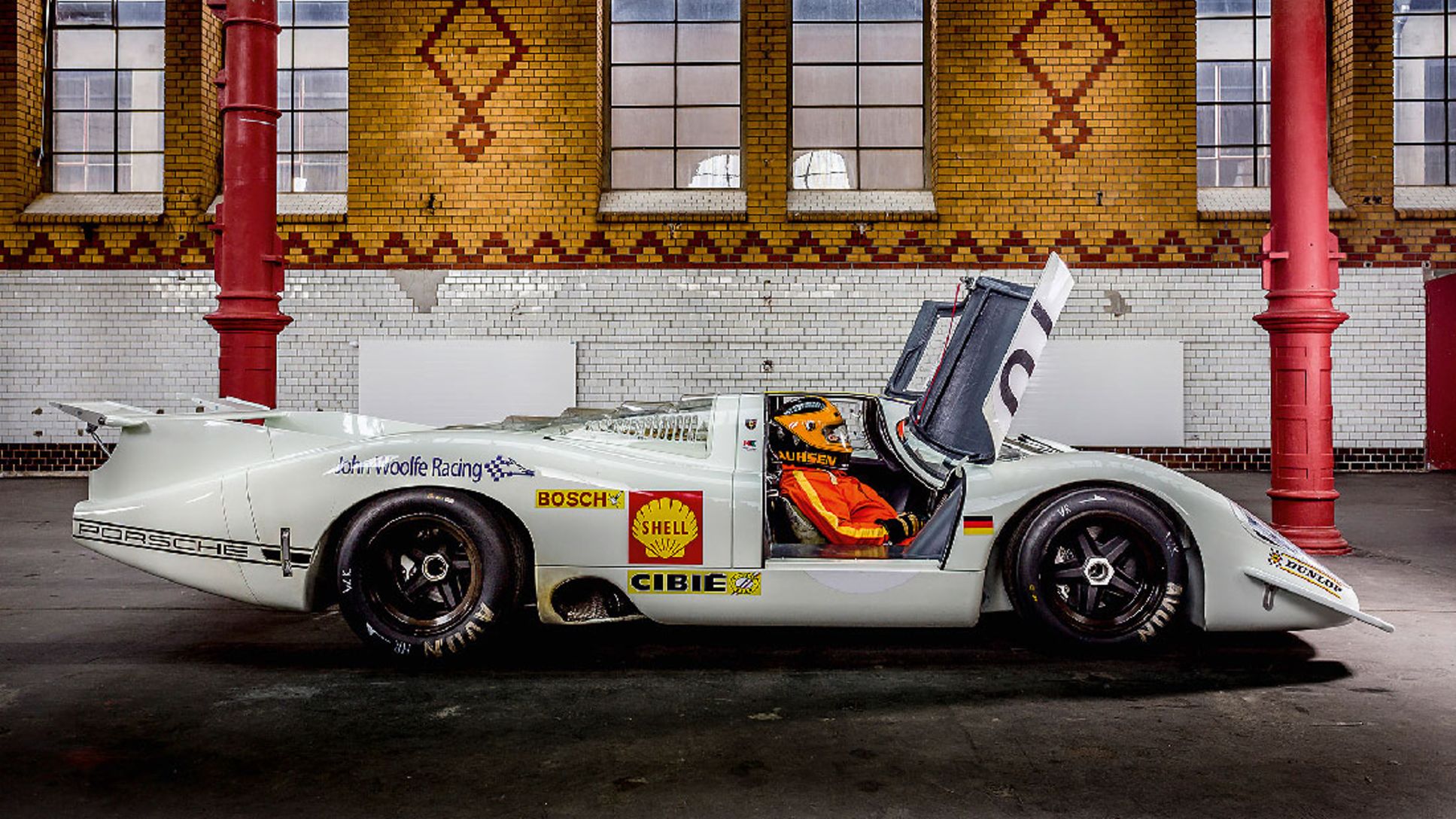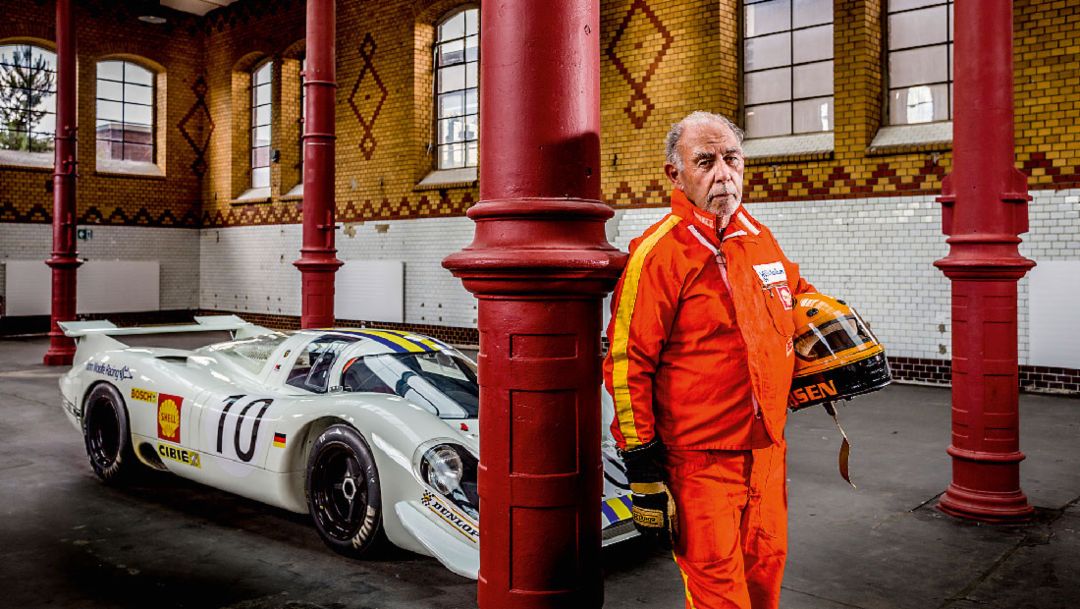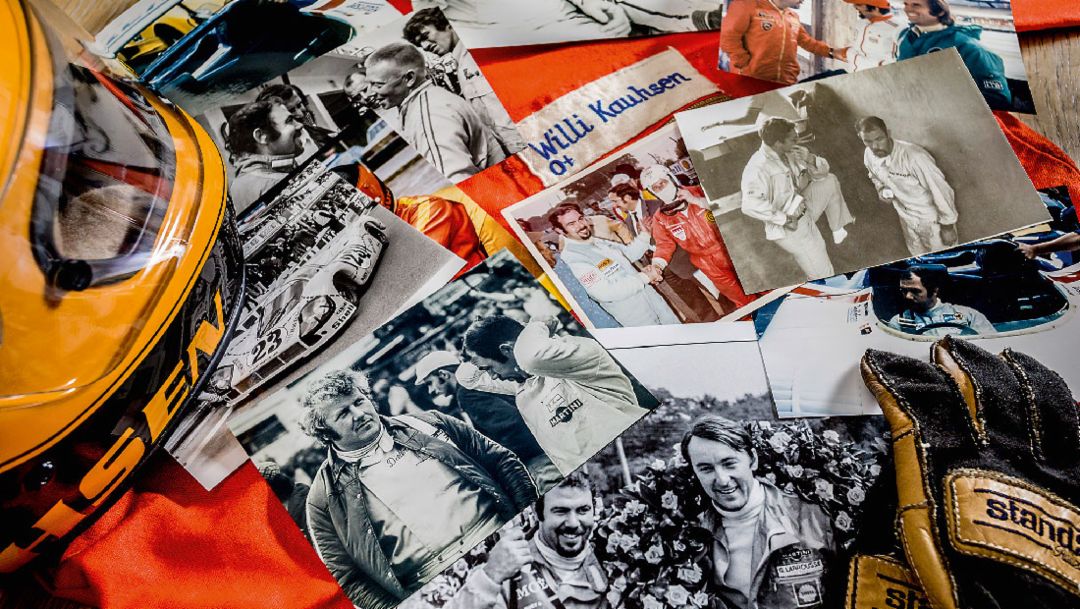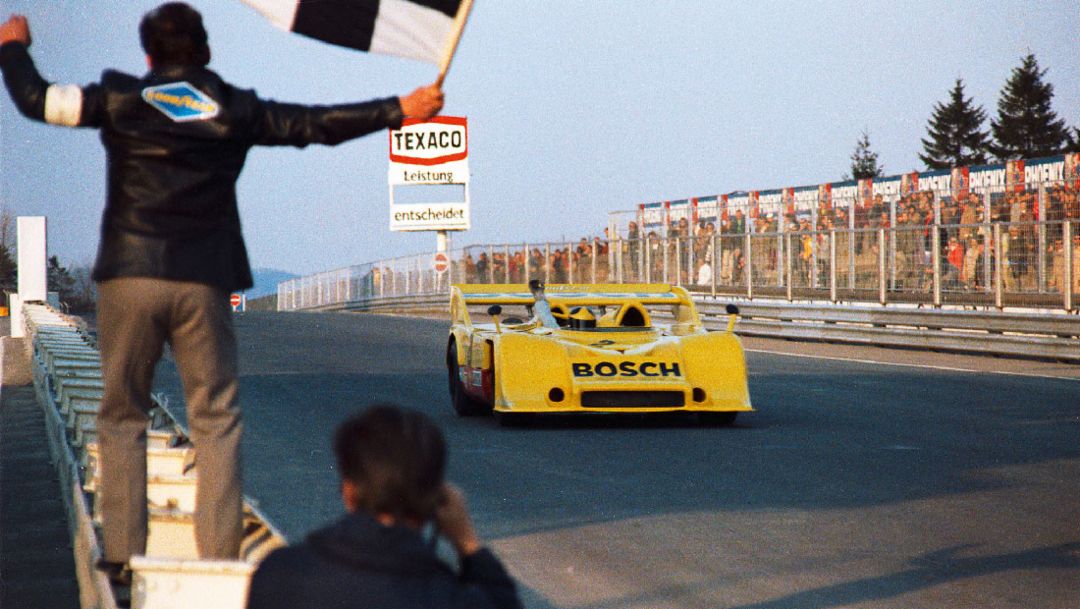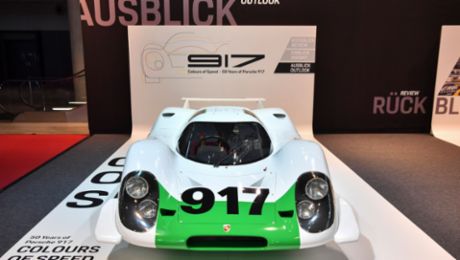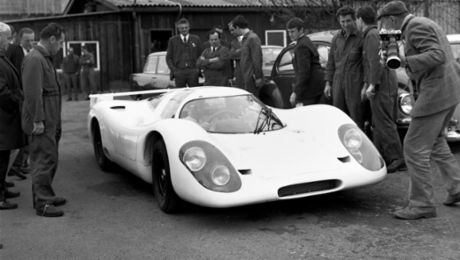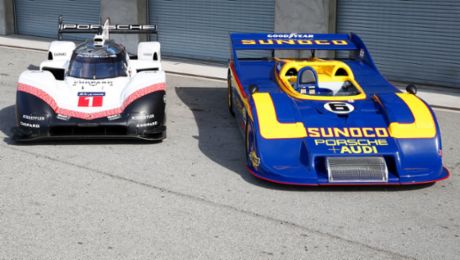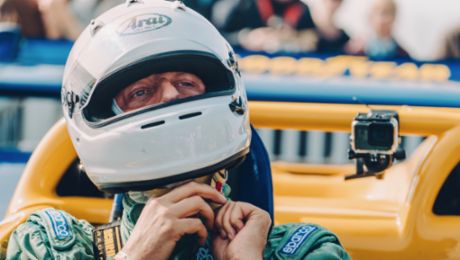Racing drivers can be well trained in PR-speak, even expert commentators. But they rarely come across as witty storytellers. One of the few exceptions is Willi Kauhsen. The 79-year-old is full of anecdotes from a time when sex was still safe and motor racing was dangerous. At times, the Aachen native has had entire parties in stitches with his anecdotes – peppered with the Aachen dialect “Öcher Platt”. Kauhsen not only has a good feel for punchlines, but he can also make fun of himself. In short, they broke the mould when they made this former Porsche factory driver.
Here is a story that is typical of Kauhsen. And of his sense of irony and self-criticism. Between 1969 and 1973, Kauhsen was constantly testing Porsche racing models, including, of course, the 917 Spyder, which produced over 1,100 hp and later dominated the American CanAm series with Mark Donohue at the wheel. Kauhsen in his own words: “Donohue was due to visit Porsche for the first time. I collected him from Stuttgart airport and said: “You’ve been on your feet for 20 hours. You must want to get to your hotel.” He looked at me askance and said: “No. I want to drive. Right now.” So we headed to Weissach. Mark put on his racing boots, his helmet – he didn’t even have any overalls! And – what can I say: He smashed my record after a few laps! I’d driven hundreds of laps and thought: “Nobody can go faster here!” I said to the Porsche people: “If that’s the case, then I give up racing.” Well, he didn’t in the end.
But we don’t want to depict Willi Kauhsen as a mere after-dinner speaker, but as a racing driver, test driver, and team boss. The journalist Rainer Braun once dubbed him “Mister 1,000 hp”. And it is certainly apt because Willi Kauhsen cemented his reputation in the Interseries and the CanAm series in cars with that level of power. And he is closely linked to one of the most extreme racing cars of the 20th century – the Porsche 917. It is the ultimate car of his lifetime. So it is fitting that Kauhsen has just built one of these legendary 917 types. Getting it ready to race has taken six years. And this heavyweight is now set to compete in the Le Mans Classic in early July.
Ralf Kelleners has subjected this venerable racing car, which dates from 1969, to extensive test drives in Valencia and Barcelona. The verdict: the car runs fantastically. So there now exists – at least judging by the chassis number (005) – a 917 with a pretty gruesome history. The “005” was the Porsche in which the Briton John Woolfe was killed at the 24 Hours of Le Mans in 1969.
A tragedy
The tragedy occurred when Woolfe crashed into the barriers on the first lap. The 917 then rolled and caught fire. Woolfe was killed instantly. He wasn’t wearing a seat belt. As a result, the “Le Mans Start” (the sprint from the opposite side of the road to the car) was abolished from 1970 onwards. Too many drivers set off without fastening their seat belts to avoid losing too much time at the start of the race. This was complete recklessness, but also evidence of a lack of safety awareness on the part of the sporting authorities. It is no wonder that motor racing was a game of life and death between the 1960s and the 1980s. In all categories of motorsport.
What was the Porsche situation at the end of the 1960s? Ferdinand Piëch, at that time the commander of a fearsome Porsche armada in Stuttgart, had focused all his efforts on transforming the brand from class winners to overall winners. Against Ferrari, Ford, Alfa Romeo, and General Motors. The clearly stated objective was to win the Brand World Championship (a feat achieved in 1969). But above all, the aim was to win the ultimate classic – the 24 Hours of Le Mans. Success came at last in 1970, with a one-two finish for Herrmann/Attwood and Kauhsen/Larrousse. But in 1969, the year of the Woolfe tragedy, the two works 917s dropped out while leading.
The Porsche 917, designed by Ferdinand Piëch (“the greatest risk of my life”), must be considered as one of the greatest cars of the century. To begin with, the racing coupés with 4.5-litre twelve-cylinder engines and over 600 hp fended off all rivals to win the world championship titles in 1970 and 1971. Then the FIA changed the rules. The 917 could no longer keep up. However, Porsche continued to develop the 917. They came up with the Spyder, with up to 1,100 hp turbocharged engines. The competition didn’t stand a chance against these cars either. Neither in the European Interserie or in the North American CanAm series.
Today, the “917s” (whether as coupés or Spyders) are rarities for which collectors are prepared to part with millions of dollars. Willi Kauhsen, who himself competed in these 917 thunderbolts from 1970 to 1974, had kept hold of the ex-Jo Siffert 917 Spyder from his racing days. He restored the top racing car and auctioned it in Pebble Beach in 2000. Now he has finished the second 917 of his lifetime.
How did it come about?
Kauhsen: “I bought two accident-damaged Rothmans 956s from the factory at the end of the 1980s, when Dr Ulrich Bez was on Porsche’s development board and the Group C era was ending. And there were heaps of spare parts in storage in Zuffenhausen. They included lots of parts for the Porsche 917.” That was a great starting point for building a new 917. Kauhsen acquired the type plate with the chassis number “005” from the Woolfe family in England. Be that as it may: There is no doubt that the now completed 917 has a touch of authenticity.
Kauhsen himself started his career in an Abarth 1000 TC Corsa, with which he won the 1967 European Cup. Then came the Porsche era. In 1968, with Glemser and Linge, he won the Marathon de la Route, an 84-hour race at the Nürburgring, in a factory Porsche 911. In the same year he and Helmut Kelleners also won the 24 Hours of Spa (again in a 911). In 1969 Kauhsen competed in the Porsche 908, sometimes in the cockpit of works cars. These were piloted by megastars. Full-throttle pros including Siffert, Rodríguez, Bell, Elford, Stommelen, Hermann, Ahrens, Mitter, and Attwood. Willi Kauhsen endured a rough ride at that time, but his other qualities shone through: He didn’t crash and he proved to be a diligent test driver capable of providing useful feedback to the engineering staff.
Kauhsen is still remembered by his fans for his drives in the brightly painted Hippie 917 (second at Le Mans), and being at the front and often victorious in the bright yellow Bosch 917 Spyder. But in 1974, aged just 35, he ended his racing career. He became the boss of the “Willi Kauhsen Racing Team” (WKRT). And things got off to a great start. Kauhsen was allowed to use the works Alfa Romeo Tipo 33. With drivers like Ickx, Bell, Stommelen, Merzario, and other luminaries. WKRT won seven of eight World Championship races. What a debut as a racing manager.
But things didn’t continue in the same vein. The Aachen man was tempted by Formula 2 and Formula 1. He even dared to construct his own cars for the Grand Prix races. But to put it bluntly: it all went wrong. Willi Kauhsen then devoted himself to building historic racing cars. That was his “thing”, and remains so today. His specialist knowledge of the Porsche era is second to none. No wonder his garage is packed with jewels. In addition to the 917 are the famous 907 Longtail Porsche from 1967, a Porsche Carrera RSR from 1974, and a Porsche 934 Turbo.
Willi Kauhsen got to know all the aces from the racing world personally during the ups and downs of his colourful automotive life. The list is long. Very long. Emerson Fittipaldi (who once raced one of his Porsche 917s on the Nürburgring), Ickx, Mass, Stuck, Andretti and plenty more besides. He was friends with many of them – such as Rolf Stommelen. “He was extremely fit and encouraged me to train according to the Cooper Test for astronauts. And it was much needed. In a rocket like the 917. The loads were 4 or 5 g.” Who was fastest in the 917? Kauhsen: “Jo Siffert and Pedro Rodríguez. They were greats, but they paid with their lives.” Who does he admire most? “Ferdinand Piëch of course. What he started with Porsche racing is unique. And he’s a very special man in other ways too.” Why? Kauhsen: “He’s a man of few words.” And then comes another Kauhsen anecdote. “I was at his house once. He showed me the swimming pool and said: “Bring your swimming trunks the next time you come.” So I did. And then the two of us swam around in the pool, probably for half an hour. Without saying a word to each other.”
Info
Text first published in the magazine Porsche Klassik "Special Edition – 70 years of Porsche race cars".
Text by Eckhard Schimpf // Photos by Theodor Barth
Copyright: The image and sound published here is copyright by Dr. Ing. h.c. F. Porsche AG, Germany or other individuals. It is not to be reproduced wholly or in part without prior written permission of Dr. Ing. h.c. F. Porsche AG. Please contact newsroom@porsche.com for further information.
